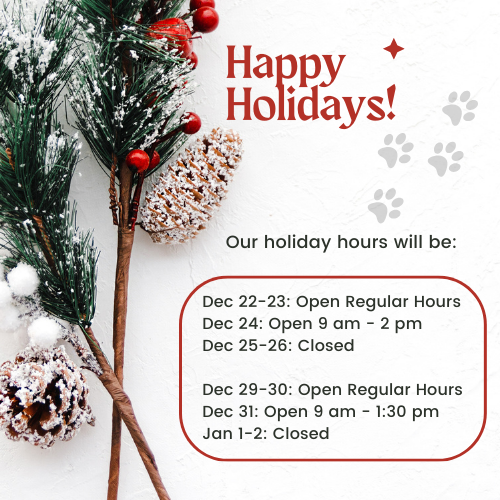
Common Orthopedic Problems in Dogs
When it comes to our furry friends, their health is our top priority. Yet, many dog owners are unaware of the orthopedic problems that can affect their pets. Orthopedic issues in dogs can range from mild discomfort to severe pain, greatly impacting their ability to move and enjoy life. Whether it's a genetic condition like hip dysplasia, an injury from play, or a degenerative issue due to age, these problems require prompt attention and care. By understanding the common orthopedic problems dogs face, we can take proactive steps to ensure they remain happy, active, and pain-free for years to come.
Common Orthopedic Issues in Dogs
Orthopedic issues in dogs can significantly affect their daily lives, causing pain and limiting mobility. Some of the most common orthopedic problems in dogs include:
- Hip Dysplasia in Dogs: This genetic condition is particularly prevalent in larger breeds like German Shepherds and Labradors. Hip dysplasia occurs when the hip joint fails to develop properly, leading to loose and unstable joints. Over time, this can cause arthritis and chronic pain, making it difficult for your dog to move comfortably.
- Cruciate Ligament Tears in Dogs: These injuries are among the most frequent orthopedic problems in dogs, especially in active breeds like the Labrador Retriever. The cruciate ligament, which stabilizes the knee joint, can tear due to sudden movements, like jumping or twisting. This condition often results in lameness and requires surgical intervention for complete recovery.
- Patellar Luxation: Common in small and toy breeds, patellar luxation occurs when the kneecap (patella) dislocates from its normal position. This can cause intermittent limping or skipping and, if left untreated, can lead to arthritis and more severe joint damage.
Understanding these common orthopedic problems is crucial for dog owners to recognize early signs and seek appropriate veterinary care. Early detection and treatment can help manage these conditions effectively, ensuring a better quality of life for your canine companion.
Symptoms and Diagnosis of Orthopedic Problems in Dogs
Recognizing the symptoms of orthopedic problems in dogs is crucial for early intervention and effective treatment. Some of the most common signs to look out for include:
- Limping or Lameness: If your dog is favoring one leg or has difficulty walking, this could indicate an orthopedic issue. Limping is often a response to pain or discomfort in the affected limb.
- Difficulty Standing Up or Lying Down: Dogs with joint problems may struggle to get up from a lying position or seem hesitant to sit or lie down due to pain.
- Reluctance to Climb Stairs or Jump: Orthopedic problems can make activities like climbing stairs or jumping onto furniture challenging for your dog. They may avoid these actions to prevent pain.
Changes in Gait: Noticeable changes in the way your dog walks, such as a stiff or altered gait, can be a sign of underlying orthopedic issues.
Veterinarians diagnose orthopedic problems through a combination of physical exams and imaging tests, such as X-rays, MRI, or CT scans. Early diagnosis is essential for managing pain and preventing further damage. Regular check-ups and being attentive to changes in your dog's behavior can help identify orthopedic issues early, ensuring your pet receives the best possible care.
Treatment and Management Options for Orthopedic Problems in Dogs
Treating orthopedic problems in dogs involves a range of options depending on the severity of the condition. For mild to moderate cases, non-surgical treatments are often effective. These may include:
- Physical Therapy: Tailored exercises and therapies, such as hydrotherapy and laser therapy, can help improve joint mobility and reduce pain.
- Medication: Anti-inflammatory medications and pain relievers can help manage discomfort and reduce swelling in affected joints.
- Weight Management: Maintaining a healthy weight is crucial for dogs with orthopedic issues. Excess weight puts additional strain on the joints, exacerbating pain and damage.
For more severe cases, particularly those involving significant joint damage or injuries like cruciate ligament tears, dog orthopedic surgery may be necessary. Surgical options can range from joint stabilization procedures to complete joint replacements, depending on the dog's specific needs. Post-surgery, a comprehensive rehabilitation plan, including physical therapy and controlled exercise, is vital for a successful recovery. Combining various treatments tailored to the individual dog’s needs can greatly enhance their quality of life, allowing them to regain mobility and comfort. Early intervention and a well-rounded approach to treatment can make all the difference for dogs suffering from orthopedic problems.
Protect Your Dog’s Mobility and Health
Orthopedic problems in dogs, whether minor or severe, can greatly impact their ability to live an active and pain-free life. By staying vigilant and recognizing the early signs of orthopedic issues, such as limping, changes in gait, or reluctance to move, dog owners in Miami and the surrounding areas like Little Havana, Coral Groves, and Allapattah can ensure their pets receive the necessary care. Effective treatment options, including physical therapy for dogs, medication, and surgery, are available to manage these conditions and improve your dog’s quality of life.
Don’t wait until your dog’s discomfort becomes a serious issue. If you notice any signs of orthopedic problems in your dog, it’s essential to consult a veterinarian in Miami as soon as possible. The dedicated team at Miami Pet Clinic is ready to help. Book an appointment today to give your dog the best chance at a healthy, active life.
When you subscribe to the blog, we will send you an e-mail when there are new updates on the site so you wouldn't miss them.





